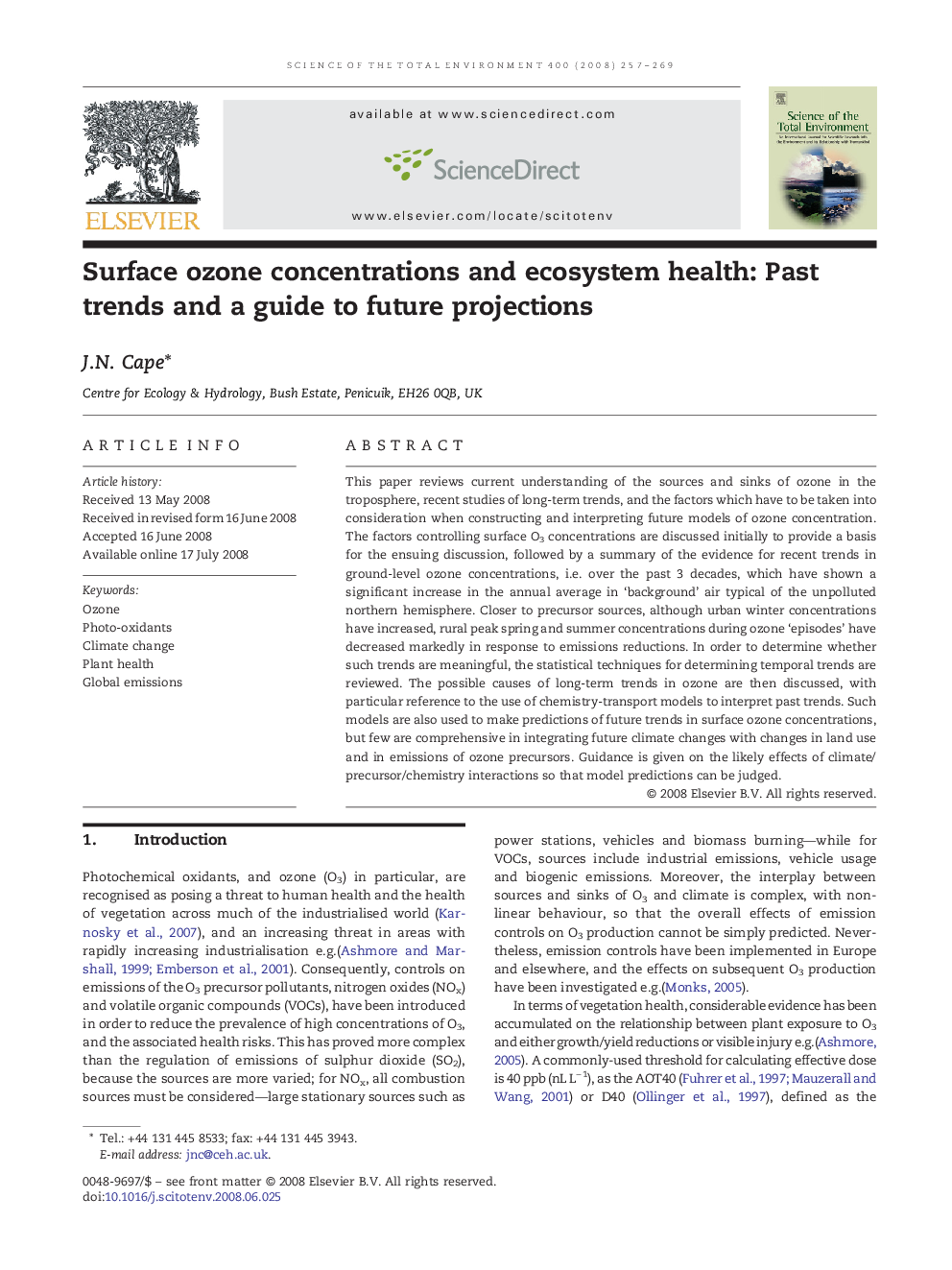| Article ID | Journal | Published Year | Pages | File Type |
|---|---|---|---|---|
| 4432547 | Science of The Total Environment | 2008 | 13 Pages |
Abstract
This paper reviews current understanding of the sources and sinks of ozone in the troposphere, recent studies of long-term trends, and the factors which have to be taken into consideration when constructing and interpreting future models of ozone concentration. The factors controlling surface O3 concentrations are discussed initially to provide a basis for the ensuing discussion, followed by a summary of the evidence for recent trends in ground-level ozone concentrations, i.e. over the past 3 decades, which have shown a significant increase in the annual average in 'background' air typical of the unpolluted northern hemisphere. Closer to precursor sources, although urban winter concentrations have increased, rural peak spring and summer concentrations during ozone 'episodes' have decreased markedly in response to emissions reductions. In order to determine whether such trends are meaningful, the statistical techniques for determining temporal trends are reviewed. The possible causes of long-term trends in ozone are then discussed, with particular reference to the use of chemistry-transport models to interpret past trends. Such models are also used to make predictions of future trends in surface ozone concentrations, but few are comprehensive in integrating future climate changes with changes in land use and in emissions of ozone precursors. Guidance is given on the likely effects of climate/precursor/chemistry interactions so that model predictions can be judged.
Related Topics
Life Sciences
Environmental Science
Environmental Chemistry
Authors
J.N. Cape,
